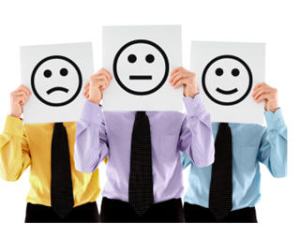 The Sons of Anarchy recently finished its 6th season on FX. For those of you who are fans—and there are millions of you out there—there are scenes that are indelibly etched into your mind. One of those scenes is without a doubt the opening episode of the 5th season where the character Tig is forced to witness the brutal murder of his own daughter, Dawn. Those of you who watched this amazing episode saw what I consider an Emmy-worthy performance by Kim Coates in the role as Tig.
The Sons of Anarchy recently finished its 6th season on FX. For those of you who are fans—and there are millions of you out there—there are scenes that are indelibly etched into your mind. One of those scenes is without a doubt the opening episode of the 5th season where the character Tig is forced to witness the brutal murder of his own daughter, Dawn. Those of you who watched this amazing episode saw what I consider an Emmy-worthy performance by Kim Coates in the role as Tig.
In anticipation of this scene, and knowing that I was a psychologist, Kim asked me to discuss it with him. He wanted to know what a person like Tig would go through psychologically in witnessing the brutal murder of a loved one. When I have the opportunity to work with actors of his caliber I never presume to coach them on how to act. But what I can do is help them understand how the mind works—in this case under catastrophic conditions. I’d like to share with you a little bit of what we talked about and then comment about the three ways we all react when threatened.
Tig is the sergeant-at-arms at his motorcycle club. He is the “muscle” and when necessary, literally the executioner. So you would think a tough guy like Tig could take anything. The “beauty” of this scene, written by Kurt Sutter, is that this tough motorcycle club member experienced something so unbearable that even he completely breaks. One important factor to consider in this scene was that Tig was chained (as he watched his daughter doused with gasoline and set ablaze). If he had been able to fight, Tig certainly would have tried to save his daughter. But what does someone who bullies his way through life do when he is powerless to do anything?
There are three ways mammals react. I talk about these three ways in my book, Follow the Yellow Brick Road: How to Change for the Better When Life Gives You Its Worst. So for our purposes here, I’ll use characters from the Wizard of Oz to make it memorable:
- Lion is a typical reaction. It is the angry reaction. We lose our temper; we yell at someone and maybe—in worst cases—become physically aggressive. We say things that are hurtful.
- Tin Man represents the adapting reaction. We give into the other. We cave in to their demands, we collude with their negative behavior and surrender our perspective, adapting to their arguments.
- A third way of reacting is Scarecrow. It is the avoidant reaction. In this reaction we avoid conflict, circumvent issues and hold our breath hoping that it will all go away. And if we can’t physically run, we shut down like a plug that is pulled. This reaction is non-relational, passive and detached.
I explored with Kim what it would be like, as Tig, to be totally powerless to save his “little girl.” Tig’s instinct would have been to fight and so he tried. He pulled on the chains that bound him. He yelled; he screamed. If unchained, he would have taken bullets en route to rescue his daughter and kill the bastard who was conducting this horror. But he couldn’t. And with no alternatives, he did something very unlike Tig. When there were no longer any viable Lion (fight) options, he went Tin-Man: He begged and pleaded. He desperately appealed to his captors. He offered himself up instead, as a sacrifice. “Take ME,” he implored. (I can’t imagine what it was like for Kim to go so deeply into that place of vulnerability and weakness.)
When that didn’t work, Tig found himself unconsciously in a Scarecrow scenario. I talked to Kim about how children who are severely abused use Scarecrow. When they are too little to fight the big perpetrator, and when begging and pleading will not stop their violation, little children often dissociate. I explained to Kim that it was like a mental “circuit breaker” built in the mind to protect a person from a psychological surge that is just too much to bear. In these cases the circuit breaker pops and we psychologically and emotionally go “offline.” We go numb; we disconnect. Anyone who has experienced that scene (no one watched the scene) will hardly forget the fully broken man who numbly watched his daughter die before his out-of-focus eyes.
I did not have to tell Kim how to play Tig in this scene. He is a natural and gifted actor—he knew. But what was helpful—and hopefully is helpful to the reader—was to know that when presented with an emotional/relational challenge we tend to move to our most familiar reaction style (for Tig it was Angry-Lion), then to our less familiar reaction style (for Tig it was Adapting-Tin Man) and finally, when all else fails, to our last resort reaction style (for Tig it was Avoidant-Scarecrow). It is important to note that not all reaction sequences are the same. For example, sometimes we try to run first (flight) and if that fails we fight and finally adapt (appease) to the threat.* In what sequence do you tend to react? If you think about it, you are likely to react differently depending on the situation.
So when important people offend or challenge us (like a spouse, a boss, child or an avenging crime-boss), the first step in managing our own reactivity is to identify that we are reacting and how we are reacting: Angry Lion (Fight), Adapting Tin Man (Freeze/Appease), or Avoidant Scarecrow (Flight). Once we do that we are halfway there. The second half of the process will have to wait for a follow-up article.
Thank you Kim for your outstanding performance.
_____
*Dr. Elias Porter describes this sequence in his Strengths Deployment Inventory.






